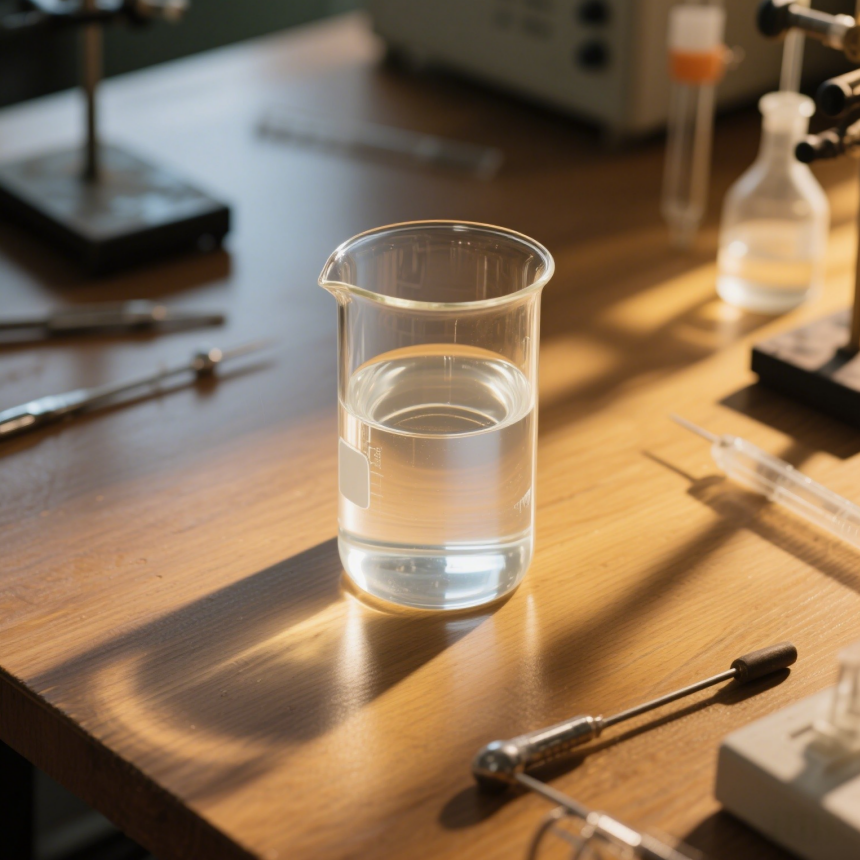La structure chimique de l'acrylate de 2-éthylhexyle (2EHA) est définie par la formule C11H20O2, composée d'un groupe acrylate (CH2=CH-COO-) lié covalent à une chaîne d'ester 2-éthylhexyle (CH2CH(CH2CH3)(CH2)3CH3). Cette structure combine un motif acrylique réactif avec une chaîne alkyle ramifiée, conférant au 2EHA des propriétés uniques essentielles à son rôle de monomère. Le groupe acrylate contient une double liaison carbone-carbone (C=C), qui subit une polymérisation, permettant au 2EHA de copolymériser avec d'autres monomères (par exemple, l'acrylate de méthyle, le styrène) pour former des polymères à longue chaîne. La chaîne 2-éthylhexyle — un groupe alkyle ramifié à huit atomes de carbone — confère de l'hydrophobicité, une température de transition vitreuse (Tg) faible et une flexibilité aux polymères obtenus, améliorant leur résistance aux variations de température et à l'eau. La liaison ester (-COO-) entre les groupes acrylate et alkyle équilibre la réactivité et la stabilité chimique, empêchant une dégradation prématurée. La société E Plus Chemical Co., Ltd. garantit l'intégrité de cette structure grâce à une polymérisation catalytique avancée, produisant du 2EHA d'une pureté de 99 %, sans impuretés pouvant altérer l'arrangement moléculaire. Cette cohérence structurale assure des performances prévisibles dans les applications : dans les adhésifs, elle améliore l'adhérence ; dans les revêtements, la flexibilité ; et dans les résines, la résistance aux chocs, faisant du 2EHA un constituant fondamental en chimie des polymères acryliques.
